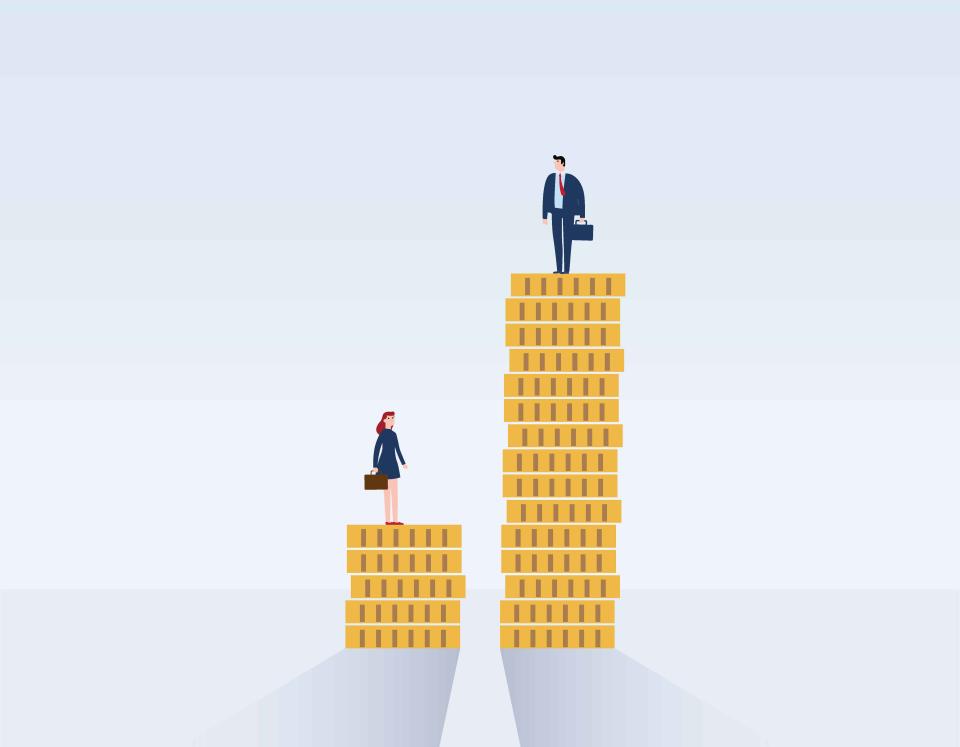Gender pay gap smallest for millennials, Gen Z, widest for older generations
A new PayScale study on the gender pay gap found that younger generations are faring much better than their older counterparts. When the pay gap is controlled — comparing the pay for men and women doing the same job in the same geographic location, same experience, education, etc. — women under the age of 30 are paid 99 cents for every dollar that a man earns. The gap continues to widen with each age range, but still stays close; women 45 and up are paid 98 cents for every dollar a man earns.

Overall, according to PayScale’s findings, when considering all age ranges, women earn 98 cents for every $1 a man earns. While a 2% reduction in pay might not seem like much, the difference compounds over time and means women can lose hundreds of thousands of dollars over a lifetime.
But when you look at the uncontrolled data, which examines the median earnings of all women vs. men, the gap widens more considerably. Women under the age of 30 earn 84 cents for every $1 a man earns; for women aged 45 and older, the gap leaps to 70 cents for every $1 earned by a man.
Race and regional differences
It is important to note this year’s data didn’t consider differences in race; but according to PayScale’s 2019 pay gap report, black women fared the worst, earning 97 cents compared to their male counterparts. Asian women did the best, earning $1.02. In the uncontrolled data, black women earned only 74 cents compared to a white man’s $1.
There were also regional differences in the data, but PayScale says this is likely due to differing industries across the country. According to PayScale’s 2019 data, states with Republican governors fared worse than states with Democratic ones. For the 26 states with Republican governors, the overall controlled pay gap was 97 cents. In states with Democratic governors (including Washington, D.C.), that controlled pay gap was just slightly better at 98 cents.
When looking at the uncontrolled data, Republican states had a pay gap of 78 cents, while Democratic ones had 79 cents. Interestingly, however, all the best and worst states were Republican ones. When looking at the controlled pay gap, women living in Alaska were paid the best, earning $1.02 for every dollar a man earned. Women in Iowa fared the worst, earning 95 cents for every $1 a man made. The gap widens when looking at the uncontrolled data; women in Alabama only earned 73 cents, while women in Vermont did the best, bringing in 87 cents.
Closing the gap
PayScale says this year its study focused on neutralizing the pay gap. According to a 2018 World Economic Forum report, it would take another 108 years to close the global gender pay gap. But according to PayScale’s findings, a transparent pay process reduced, or effectively eliminated the gender pay gap.
PayScale notes, “when employees said they have a transparent pay process at their company, women were estimated to earn between $1 and $1.01 for every dollar earned by men – effectively erasing the gender pay gap.”

“This latest research shows just how powerful transparent pay practices can be for organizations,” said PayScale CEO Scott Torrey. “When employers use real market data and talk openly with employees about their pay, it serves to challenge the underlying bias that can impact decisions about compensation.”
Millennial women also fared better with a transparent pay process, earning $1.02 compared to $1.01 of women from other generations.
But, the study found, while a transparent pay process did help neutralize the pay gap, not all women benefitted.
At the director and executive level, the study found, the pay gap persisted, which might explain why younger women fared better than older ones. Different industries were also impacted differently.
“While all industries show a marked reduction in the gender pay gap,” the report noted, “ the wage gap did not completely disappear in a few select industries including Accommodation and Food Services, Retail and Customer Service, and Transportation and Warehousing.”
Male-dominated occupations also were resistant to the neutralizing effects of a transparent pay process. These were most often seen in jobs in “Food Preparation and Serving, Installation, Maintenance and Repair jobs, Production occupations, Protective Services and Sales,” according to PatScale.
Kristin Myers is a reporter at Yahoo Finance. Follow her on Twitter.
Read more:
Trump withholding aid to Ukraine illegal, says Government Accountability Office
New Trump housing rule to increase discrimination against minorities, say advocates
Minorities pay more to bank than whites: Report
Democrats receive record number of campaign contributions in 2019
Trump's impeachment has been cheaper than Clinton's
Read the latest financial and business news from Yahoo Finance
Follow Yahoo Finance on Twitter, Facebook, Instagram, Flipboard, LinkedIn, YouTube, and reddit.

 Yahoo News
Yahoo News 

